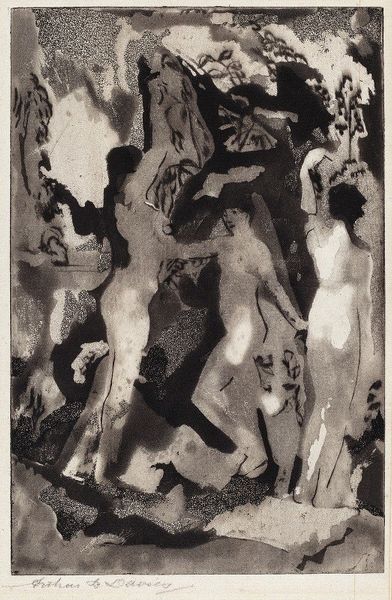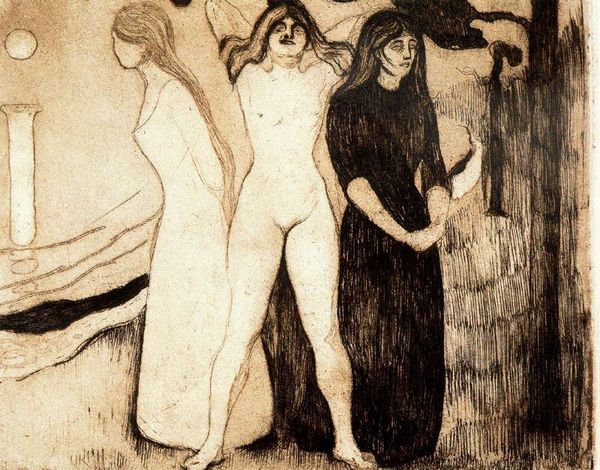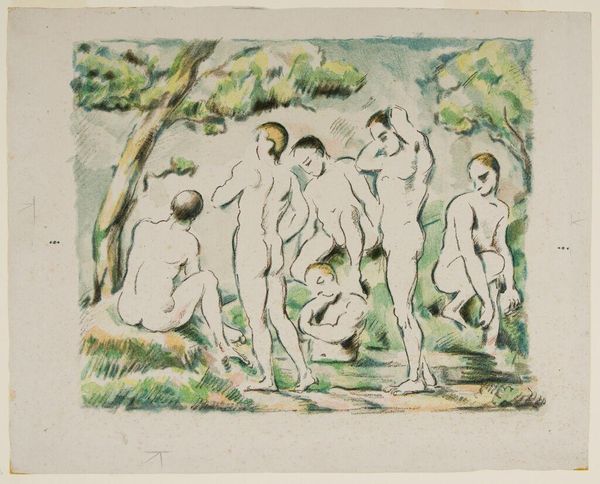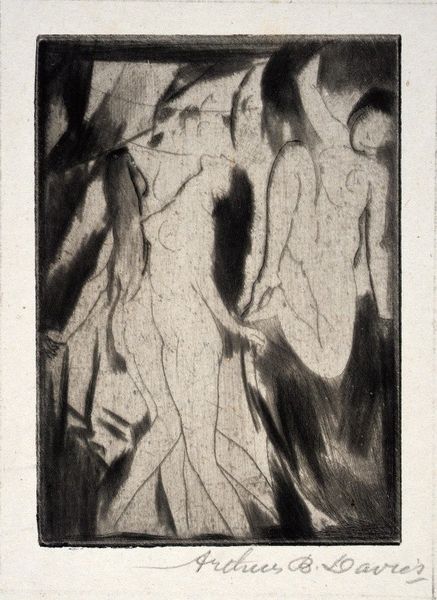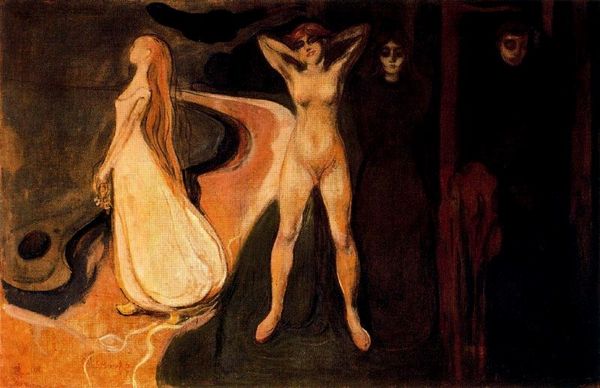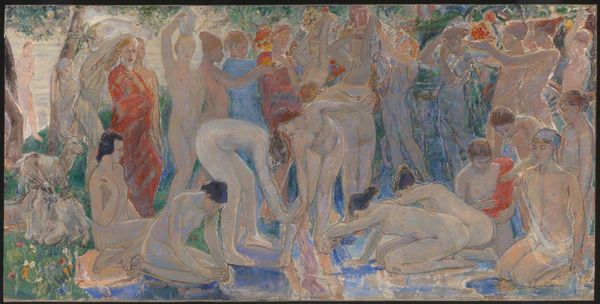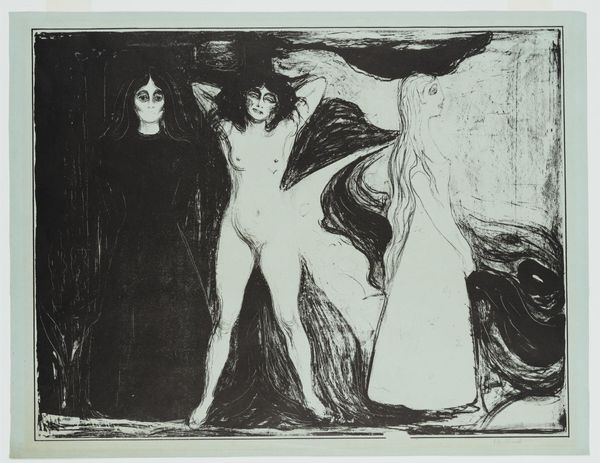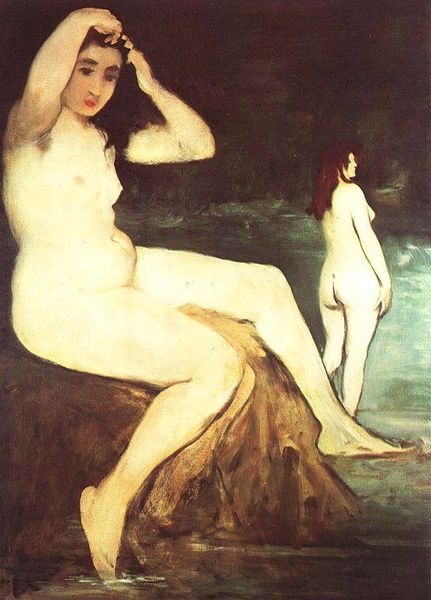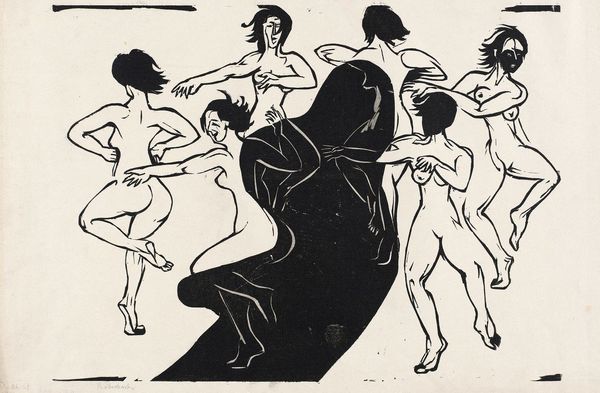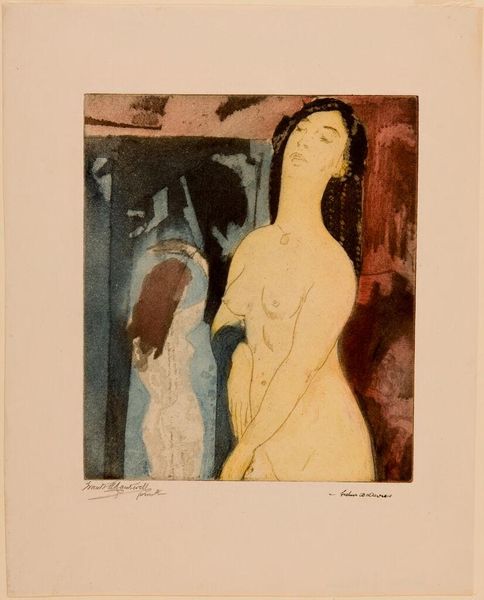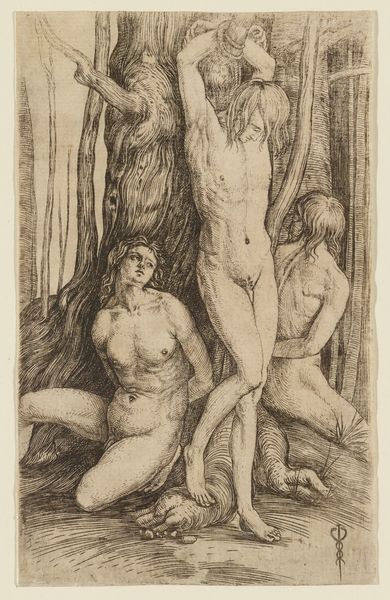
drawing
#
drawing
#
allegories
#
allegory
#
fantasy art
#
symbol
#
landscape
#
fantasy-art
#
figuration
#
form
#
female-nude
#
roman-mythology
#
mythology
#
line
#
symbolism
#
nude
Dimensions: 34 x 38.5 cm
Copyright: Public domain US
Editor: We’re looking at Frantisek Kupka’s drawing, "Prometheus in Chains," from 1905. It’s… intense. There are so many figures, a stark landscape, and this looming chained figure. How do you interpret this work? Curator: Focus first on the linearity; note the dominance of line over tonal modelling. Consider the strategic deployment of color. Note how the drawing presents forms outlined against a deep violet ground. What effect does that sharp contrast of form and background accomplish? Editor: It creates a sense of starkness. Everything is clearly defined, but the color gives it this ethereal, almost dreamlike quality. It isolates Prometheus. Is Kupka trying to convey a sense of isolation? Curator: Note how line dictates the rendering of form, flattening them to graphic silhouettes, especially the figure of Prometheus. How might you correlate this abstraction to its thematic import? Editor: The abstraction maybe emphasizes the universal nature of the myth? It is about everyone. Are those figures offering Prometheus comfort or just witnessing his torment? Curator: Observe how their lines echo one another in rhythmic sequences. Do the similarities or variations offer some insights into their thematic import, perhaps about the nature of pity? Editor: I see how they're linked, how the curves mirror each other... Maybe the pity comes from that recognition, from seeing themselves in his suffering. I never considered line as its own language like this. Curator: Form precedes content in art. By attending to the arrangement of shapes and their attendant interplay, you find the logic of expression in a drawing. Editor: This formal approach gives me a different avenue of analysis. Curator: Indeed; it unlocks a visual means of thinking and deciphering beyond merely subject and interpretation.
Comments
No comments
Be the first to comment and join the conversation on the ultimate creative platform.
